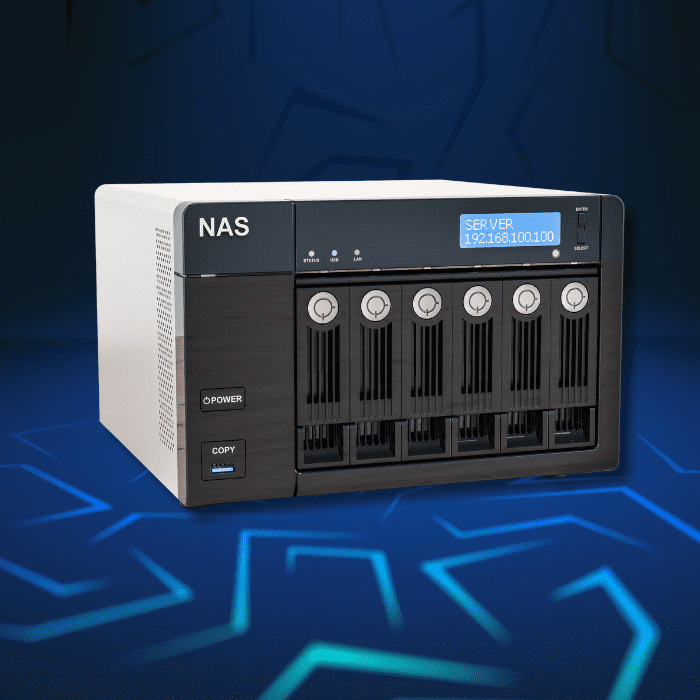The SSD is one of the most important parts of a computer, as it is where all the data is stored. For this reason, it is very important that you know how to identify faults and how to fix your SSD.
SSD is short for Solid State Drive, which is a piece of storage that is quieter and faster than the old hard disk.
As its function within the computer or notebook is so important, this text will help you identify faults, find out if it has burned out, as well as teach you how to repair an SSD and avoid losing your data.
Faulty SSD: how do I know?
Before finding out how to repair your SSD, it is important to know how to identify if it’s failing. The errors below are some of the faults that can appear:
1. Some data files cannot be read
Files will begin to appear in the system that cannot be read, this is because the system has identified that the data is in defective blocks on your SSD drive, so it will not be allowed to read it.
This error is one of the indications that your SSD is failing.
2. The file system needs to be fixed
Another error is when a Windows boot error called “BCD” starts to appear. This can be caused by a faulty block signal or an interface problem with your SSD.
3. Frequent failures during start-up
Another indicator of failure is when your system installed on the SSD drive is crashing frequently during startup and persists even after repair attempts, this means that it will probably stop working.
4. SSD drive becomes read-only
Your SSD suddenly goes into read mode and refuses any write operation without you having manually configured it to do so. This error indicates that your SSD is corrupted.
5. SSD drive slows down
This error is easier to spot because your SSD starts to slow down, which indicates problems.
How do I know if my SSD is burnt?
If your device’s entire system has stopped working, making it impossible to access all the data stored on it, it’s a sign that it has burned out.
In these cases, it’s important to find a specialized company to check what happened, determine what was done and analyze whether the data can be recovered.
In some cases, data recovery is not possible, so it’s important that you know how to identify the faults and how to repair your SSD, preventing it from burning out and losing your data.
Is it possible to recover an SSD?
Yes, if your SSD is showing errors, it is possible to recover it with some methods that we will teach you in this article.
However, we stress that you need to be aware of the faults that can occur with your SSD in order to recover it in time and not lose your data.
How to repair a corrupted SSD without losing data?
There are two methods to repair your corrupted SDD without losing your data.
Connect the SSD to another port and the SATA cable to another PC
- Turn off the PC completely and unplug the power cable;
- Disconnect the SATA cable from the SSD, but leave the power cable connected.
- Plug the PC’s power cable back in -> turn it on -> enter BIOS.
- Leave your PC idle in BIOS for 30 minutes -> turn off your PC.
- Connect the SATA cable back to your SSD and boot your PC into BIOS again.
- Navigate to the boot settings menu -> check that the PC is configured to boot from the SSD.
- Start Windows and check that your SSD drive is recognized normally.
Use data recovery software
Another option is to use a good data recovery system, there are many free software programs with this option:
- iSkysoft Data Recovery;
- Recuperar os meus ficheiros;
- Remo Recover;
- Stellar Data Recovery e outros.
How to repair an SSD?
In cases where it has stopped working, there are a few methods for repairing your SSD.
Update the firmware of the faulty SSD
First step, find out what model your SSD is by going into File Explorer, right-clicking on the problematic SSD drive and clicking on “Properties” > “Hardware”, and your SSD will appear.
Second step, with the information obtained, search for the specified SSD firmware update tool online, download it and install it on your computer.
Finally, run the SSD firmware update tool, check the firmware versions of your SSD in the tool and follow the tips to complete the firmware update process.
Update drivers to repair the SSD
In this method, you will first click on the “Start” button, type “Device Manager” in the “Search” box and it will open;
Then expand the “Disk drives” category, right-click on the SSD driver and select “Update driver”. Then restart your computer when the process is complete.
You can also choose “Uninstall” in the second step, restart your computer and it will automatically install the disk driver.
Run CHKDSK to repair SSD bad sectors
Start by opening the Command Prompt window: click on the “Start” button, type “cmd” in the search bar, right-click on Command Prompt and select “Run as administrator”.
Then, in the command prompt window that opens, type “chkdsk g: /f /r /x” and press Enter. (Replace “g” with the drive letter of your corrupted SSD).
This process will help you check the target SSD for disk errors and repair them, if any.
Repair corrupt SSD with partition manager software
Open EaseUS Partition Master on your computer. Then find the disk, right-click on the partition you want to check and choose “Advanced” > “Check file system”.
Then, in the file system check window, keep the “Try to fix errors found” option selected and click “Start”.
The system will check your partition file system on your disk, when it’s finished, click “Finish”.
Contact the SSD manufacturer
If none of the above options work, contact the manufacturer to try to repair your SSD.
How to recover an NVMe or M.2 SSD
In the case of an NVMe or M.2 SSD, you can’t disconnect the data connection or turn off the power connection as you can with SATA, so you have two options:
- Connect the SSD’s data cable to your computer. Wait for 30 minutes at the BIOS screen, turn the drive off for 30 seconds and repeat.
- On MAC computers, switch on while holding down the ALT / option key, where a boot menu will open. Leave the SSD in the boot menu for 30 minutes, then turn it off for 30 seconds and repeat.
How much does it cost to recover an SSD?
If you prefer to have your SSD repaired by a professional, the average price to recover it may vary for the following reasons:
- Qualification of the chosen professional;
- Type of failure;
- Capacity of your hard disk;
- Amount of data stored;
- Severity of the damage;
- Make of your Solid State Drive
- Lifespan of your SSD and more.
As you can see, there are numerous factors that influence the price variation for repairing your SSD, however, prices can range from €45 (forty-five euros) to €545 (five hundred and forty-five euros).
Conclusion
The SSD is one of the systems most used by people to store data on their computers and notebooks, and there are several faults that it can present, causing you to lose all your data.
For this reason, it is essential that you pay attention to all the evidence of possible errors that your SSD may have, because it’s important that you find out before it burns out and you lose a lot.
Now, after this text, you know how to identify these errors and even countless methods to repair your SSD without needing a qualified professional to do so and without losing any data.
If even after all your attempts you still can’t fix your problem or if you need data recovery, Bot can help you.
You have two options: (1) bring or (2) send your device to one of our units so that the technicians can analyze the problem and quote for data recovery.
All you have to do is fill in the form on the website and choose how the device will be delivered.
We work with two methods for receiving your device: free collection or delivery to one of Bot’s offices.
Bot is present in several cities across the country, with locations in the main cities. You can check which one is closest to you at this link. After filling in the form, you can hand in your device directly to Bot.
Would you like to get a closer look at Bot’s work? Take a look at our social networks:



